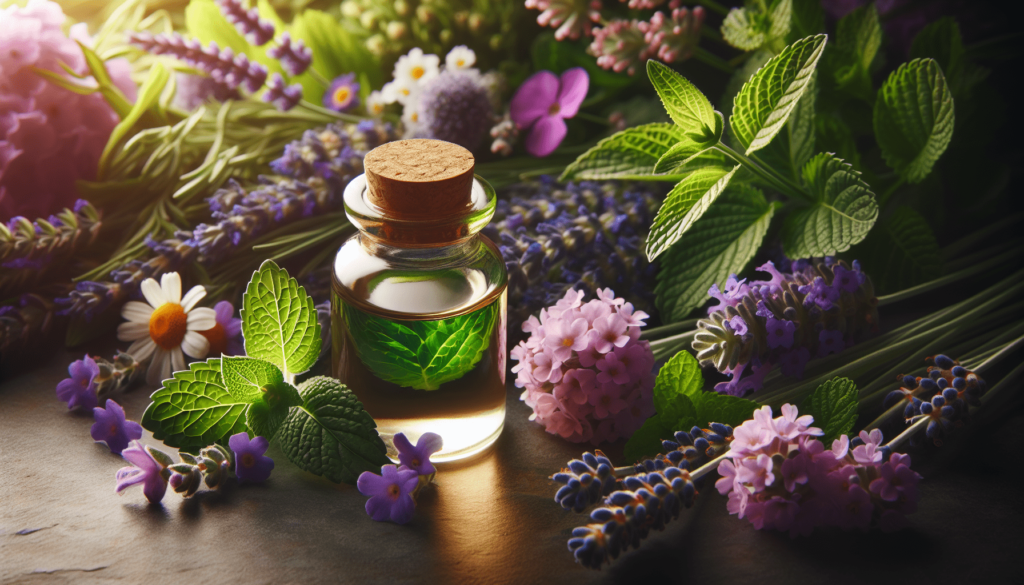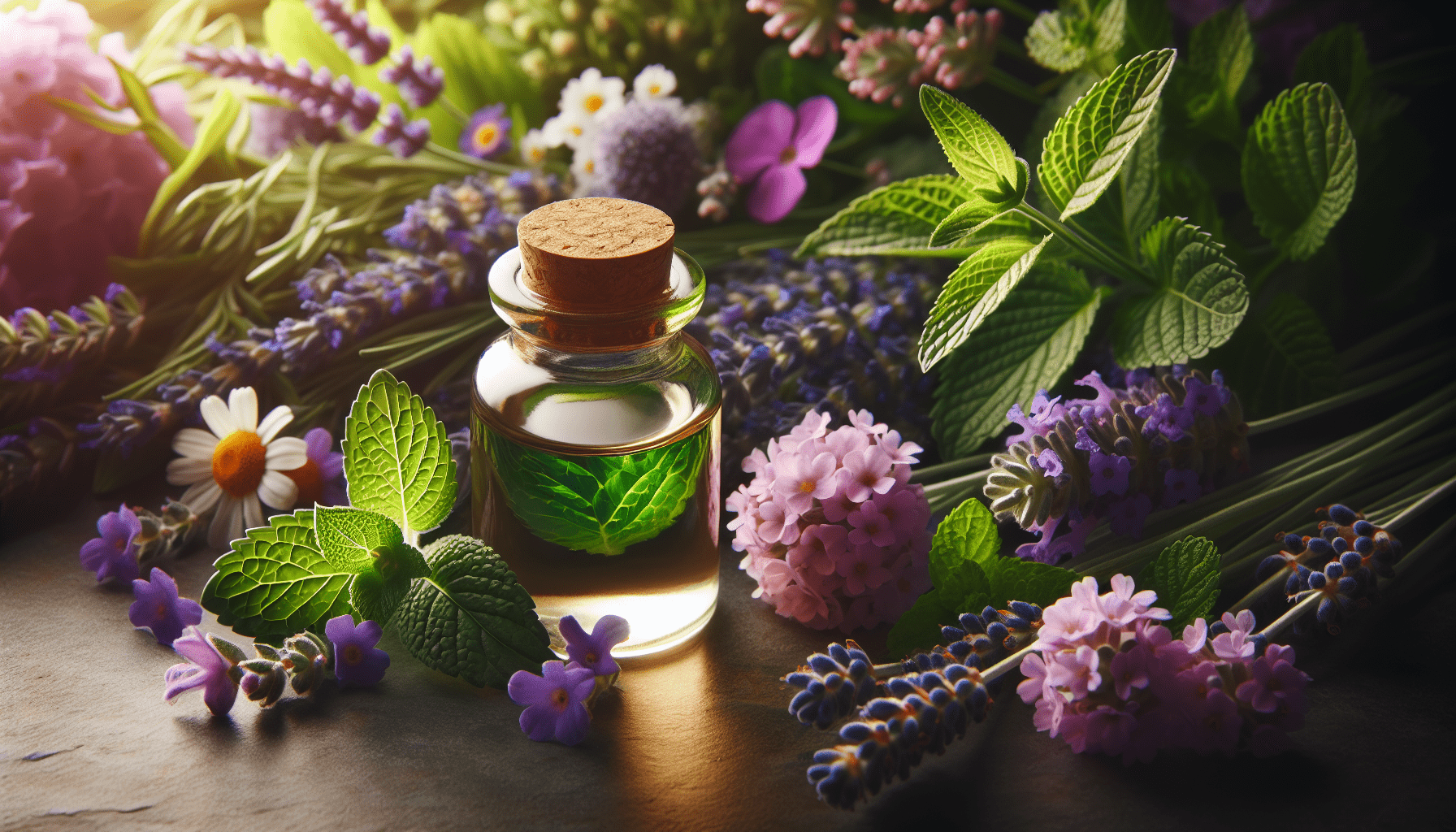Discover the gentle, natural remedies that can help you find relief from those pesky allergy-induced rashes with “Essential Oils For Soothing Allergy-Induced Rashes.” In this friendly guide, you’ll explore various essential oils known for their calming and healing properties. Whether you’re dealing with itching, redness, or irritation, you’ll learn how to harness the power of these aromatic oils to soothe your skin and restore your comfort. Dive in and find out how to create your own personal oasis of relief and tranquility. Ever wondered how you can soothe those irritating allergy-induced rashes with something straight from nature? Essential oils might just be the answer you’re looking for! Welcome to your comprehensive guide on how you can use essential oils to treat those annoying rashes caused by allergies.

What are Essential Oils?
Essential oils are concentrated natural extracts from plants. They capture the plant’s scent and flavor, also known as its “essence.” From lavender and peppermint to tea tree oil, these natural oils have a plethora of therapeutic properties that can help alleviate discomforts, including rashes.
How Are Essential Oils Made?
Essential oils are obtained through distillation or mechanical methods, such as cold pressing. Once the aromatic chemicals have been extracted, they are combined with a carrier oil to create a product that’s ready for use. The method of extraction is crucial because it ensures that the oil maintains its medicinal properties.
Why Use Essential Oils for Rashes?
Allergy-induced rashes can be quite bothersome, causing itching, redness, and swelling. Prescription medications and over-the-counter creams come with a myriad of side effects. Essential oils offer a natural alternative that can help soothe the skin without these unwanted side effects.
Essential Oils: The Heavyweights for Skin Relief
Several essential oils stand out when it comes to soothing allergy-induced rashes. Below, we break down the most effective ones and how they can help.
Lavender Oil
Lavender oil is renowned for its calming and anti-inflammatory properties. It helps reduce redness and itching, providing immediate relief.
- Usage: Mix a few drops of lavender oil with a carrier oil (such as coconut or olive oil) and apply it on the affected area.
- Benefits: Anti-inflammatory, antibacterial, and antifungal.
Tea Tree Oil
Tea tree oil is another popular choice due to its antibacterial and anti-inflammatory attributes. It’s especially effective in preventing infections that could exacerbate the rash.
- Usage: Dilute tea tree oil with a carrier oil (just like lavender oil) and use a cotton ball to apply it to the rash.
- Benefits: Antibacterial, antifungal, and anti-inflammatory.
Peppermint Oil
Peppermint oil has a cooling effect that can provide instant relief from itching and burning sensations caused by rashes.
- Usage: Combine peppermint oil with a carrier oil and apply it gently over the rash.
- Benefits: Cooling effect, anti-inflammatory, and analgesic properties.
Essential Oil Blends for Added Benefits
Blending essential oils can enhance their effects and provide more comprehensive relief. Here are a few blends you might find helpful.
Calming Blend
Mix lavender, chamomile, and eucalyptus oils for a soothing and calming effect on the skin.
- Recipe: Combine 3 drops of lavender oil, 3 drops of chamomile oil, and 2 drops of eucalyptus oil with 2 tablespoons of carrier oil.
- Application: Rub the blend gently onto the rash.
Healing Blend
A blend of tea tree oil, lavender oil, and carrier oil can speed up the healing process.
- Recipe: Combine 2 drops of tea tree oil, 3 drops of lavender oil, and 2 tablespoons of carrier oil.
- Application: Apply the blend on the affected area twice daily.
Cooling Blend
Peppermint and eucalyptus oils come together for a cooling effect that can alleviate itching.
- Recipe: Mix 2 drops of peppermint oil and 2 drops of eucalyptus oil with 1 tablespoon of carrier oil.
- Application: Apply the blend to the rash as needed.
How to Use Essential Oils Safely
While essential oils can be highly effective, it’s crucial to use them safely to avoid further irritation or other side effects.
Patch Test
Before applying any essential oil blend to a large area of skin, perform a patch test. Apply a small amount to your inner arm and wait 24 hours to see if any adverse reaction occurs.
Dilution
Essential oils are potent, and direct application can cause irritation. Always dilute essential oils with a carrier oil such as coconut, jojoba, or olive oil.
Appropriate Dosage
Less is more when it comes to essential oils. Adding more drops won’t necessarily increase the oil’s effectiveness and might actually cause harm.
Carrier Oils: The Unsung Heroes
Carrier oils are used to dilute essential oils and enhance their absorption into the skin. They themselves can have various benefits for skin health.
Popular Carrier Oils
Here are some carrier oils you can use for diluting your essential oils:
| Carrier Oil | Benefits |
|---|---|
| Coconut Oil | Anti-inflammatory, hydrating |
| Jojoba Oil | Mimics natural skin oil, soothes eczema |
| Olive Oil | Rich in vitamins, antioxidant |
How Much to Use?
A typical dilution ratio is 3-5 drops of essential oil per tablespoon of carrier oil. If you’re new to essential oils, starting with a lower concentration is advisable.
When to Consult a Healthcare Professional
Although essential oils can be remarkably effective, there are times when professional medical advice is essential.
Severe Reactions
If your rash does not improve or worsens with the use of essential oils, consult a healthcare professional immediately.
Allergies to Essential Oils
Perform a thorough patch test to ensure you’re not allergic to any essential oil you plan on using. If you have a known allergy or sensitivity to a particular plant, avoid its essential oil.
Medications and Pre-existing Conditions
If you’re already on medication or have pre-existing skin conditions, speak with a healthcare provider before using essential oils to avoid any potential interactions.
Tips for Managing Allergy-Induced Rashes Holistically
Combining essential oils with other holistic practices can provide better results.
Stay Hydrated
Keeping yourself hydrated helps your skin stay supple and can reduce the severity of rashes.
Avoid Triggers
Identifying and avoiding the allergens that cause your rashes is crucial. Whether it’s food, pollen, or a particular material, steering clear of these triggers can help manage the condition.
Use Hypoallergenic Products
Switching to hypoallergenic skincare and laundry products can significantly reduce your risk of developing rashes.
FAQs about Essential Oils for Allergy-Induced Rashes
Can I Use Essential Oils Directly on My Skin?
It’s not recommended to use essential oils undiluted on your skin as it can cause irritation. Always dilute with a carrier oil.
How Long Does It Take to See Results?
The effectiveness varies from person to person. You may start seeing results within a few days to a week of consistent application.
Are Essential Oils Safe for Children?
Essential oils can be potent, and not all are safe for children. Always consult a pediatrician before using essential oils on children.
Can I Use Multiple Essential Oils Together?
Yes, blending essential oils can enhance their effectiveness. Just make sure to stick to the recommended dilution ratios and perform patch tests.
Conclusion
Using essential oils for soothing allergy-induced rashes is a natural and effective alternative to conventional treatments. With the right knowledge and precautions, you can harness the power of these plant-derived oils to alleviate the discomfort and heal your skin. Always remember to perform patch tests and consult healthcare professionals for severe reactions or if you’re on medication. Wishing you smooth, rash-free days ahead!
